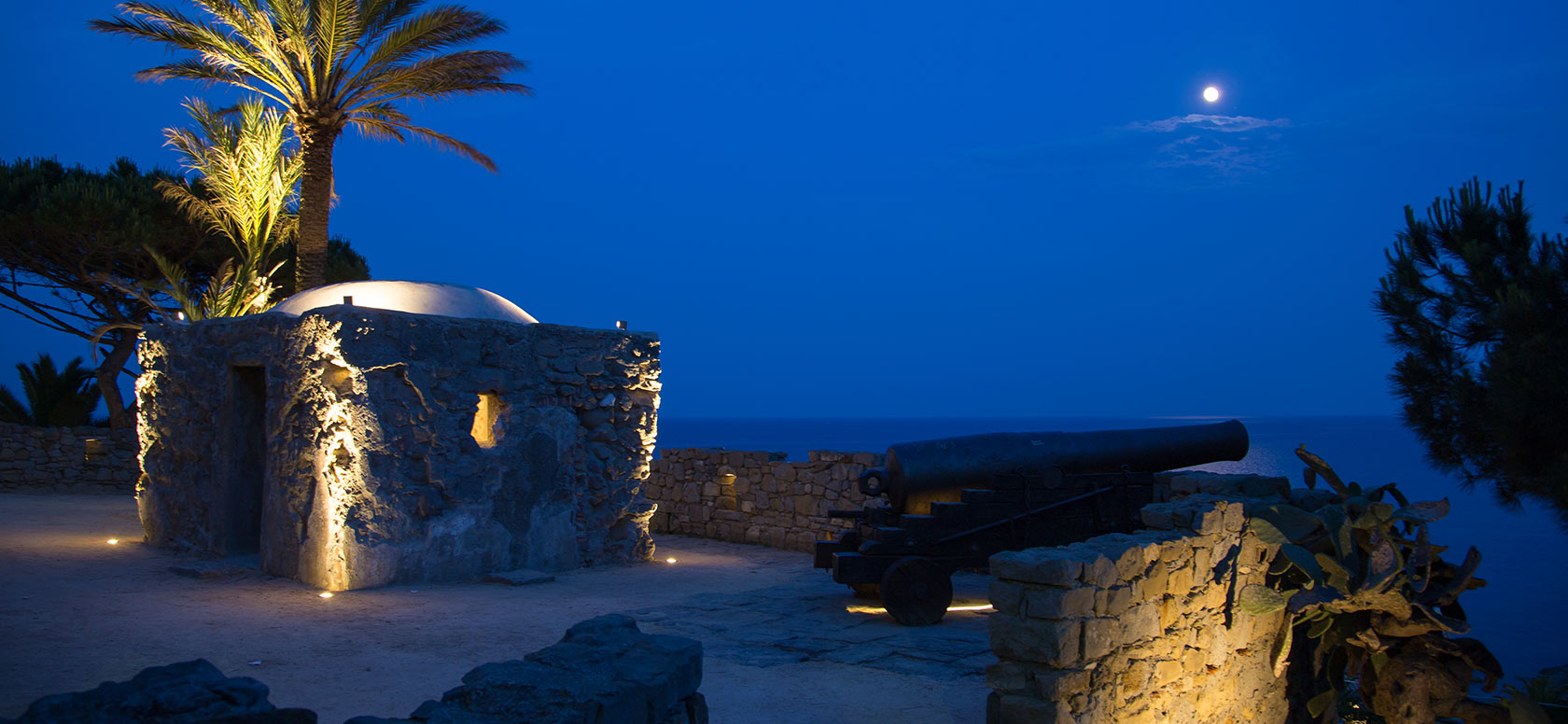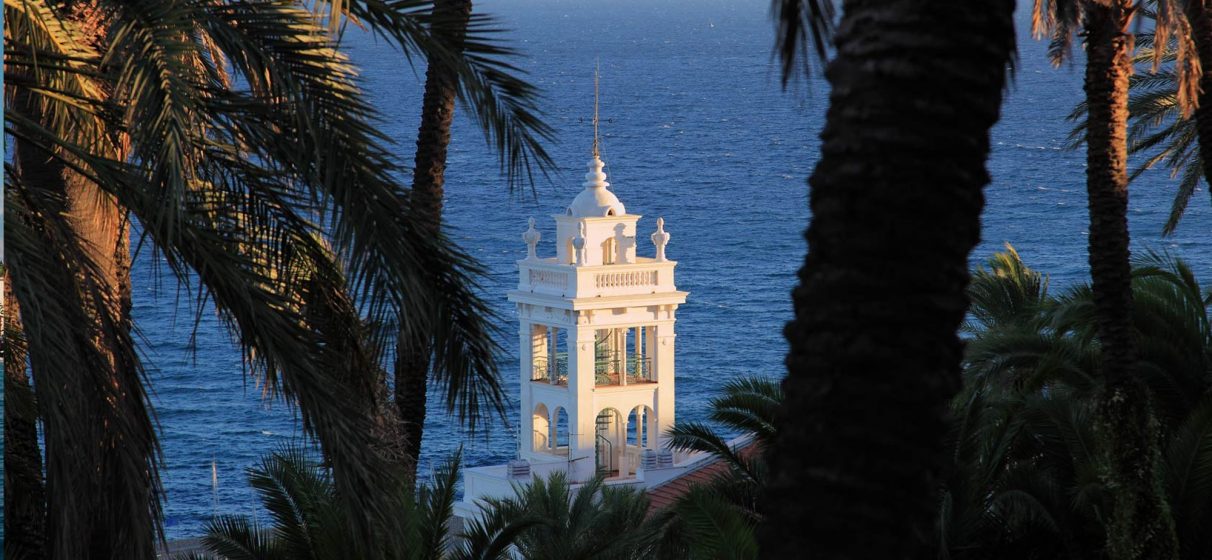
There was a period at the end of the 19th century, during which the English guests of Bordighera, staying at the Hotels and villas hidden among the olive trees, were as many as 3,000, outnumbering the local population which at the time amounted to around 2,000 inhabitants.
This extraordinary touristic « colonization » of Bordighera, was brought about mainly by a number of wealthy British families, who had chosen this part of Liguria for their winter sojourn (while other subjects of Queen Victoria preferred other resorts along the Riviera, from Cannes to Alassio) and this was due to the publication of a book in Edinburgh, in 1855, titled « Doctor Antonio » by John Ruffini, which enjoyed widespread popularity at the time.
Having been discovered for its natural beauty, for its luscious flora, for its excellent climate and its numerous peaceful hillside walks among the olive trees and palms, (it has been estimated that the Old Town was surrounded by no less than 50,000 olive trees and 20,000 palms, later sacrificed for the construction of roads and buildings and by the sales of the most magnificent palms to other cities), Bordighera had rapidly become an exclusive, first-class residential resort, even competing with Nice and Menton.

The English had created a real British centre here, with their own banks, agencies, shops, sport-clubs and cultural centres, the Anglican Church, the theatre (« Victoria Hall ») and also a weekly paper in English, imbuing the place with an atmosphere of gentlemanliness and refinement to the area. Many guests came from other European countries too.
The majority of buildings of that period still survive today, enhancing modern Bordighera with a prestigious cultural tradition, thanks also to the Bicknell Museum and the International Municipal Library. The Tennis Club is still very much in use today, it was indeed the first established Tennis Club nationwide, with 20 tennis courts (much reduced in the post-war period) and the Bridge Club as well.
One of the most important person of that world is undoubtedly Clearence Bicknell. At first a Protestant minister, then patron, a most able and sensitive scholar, a refined water-colourist, a promoter of Esperanto, an expert botanist, but above all, an indefatigable explorer and discoverer of the prehistoric Rupestrian engravings in Mount Bego, near the Maritime Alps. He became the founder, in 1888, of the first museum of Western Liguria, which still carries his name. There, in his Anglo-Saxon-come-Mediterranean building he placed his collection of archeological objects of great value, side by side with his rich collections of Natural History, which was later given to various Ligurian museums, according to the place of origin of the items.
He published two important volumes on the local flora and some essays about the Rupestrian engravings of Mount Bego, the last one in 1913.

After Bicknell’s death in 1918, the Institution passed to his grandchildren, Edward and Margaret Berry, who used it as a centre for comprehensive historical-artistic studies, and which resulted in the publication of a valuable guide: « At the Western Gate of Italy ». While Europe was heading towards a new and terrible war, and the social-political transformation of the times had changed the fortunes of the British Empire, a golden era had come to its close also in Bordighera, at first with a temporary and then a definitive abandonment of the city by almost all the English families.
But there remained the heritage of their work, the style of the city, which has now completely but probably unconciously got assimilated. After a brief period of uncertainty, the Bicknell museum became the « History Home Deputation » and susequently « The International Institute of Ligurian Studies », which still continues today. A centre for activities, functions, and most importantly, a place of Universal Archeological specialization, equipped with a most comprehensive reference library on all aspects of the Ligurian territory, from archeological, to artistic, historical and nature-related.
The International Municipal Library, a meeting place for very different readers, has recently overtaken the function as coordinator and promoter of the town’s cultural activities, re-cataloguing the impressive number of books (many volumes are in English and they are now on CD-ROMS as well, viewable on line); and encouraging conferences, concerts, shows, debates, periodically receiving big groups of fans. At the end of 1999, the number of subscribers enrolled were about 4,000. The ancient spirit continues to uphold its primary aim: « elevating » the social and moral code of all through culture and learning.
Recalling the English Institutions of Bordighera, doesn’t do justice to the other important heritage, left to us by numerous individuals who loved the city and made their own valuable contributions. For example, Frederic Fitzroy Hamilton authored the book: « Bordighera and the Western Riviera », also translated into French; a fundamental and fascinating study of natural history of the region with reproductions of documents regarding the foundation of « Burdigheta » in 1470 -71. And there was Mr. Lowe, who gave as a present to the city the gardens bearing his name in Via V. Veneto, so that the age old olive trees could remain in public ownership.
Modern Bordighera came from all of these and other various facts and from by-now forgotten episodes. It was, however, the cultural and touristic tradition of the British upper classes that provided the main reason for its fortune.
The texts have been taken from « Bordighera and the English » by Enzo Bernardini.
Translation by Manuela Borella and Veronica Noach-Kas.






